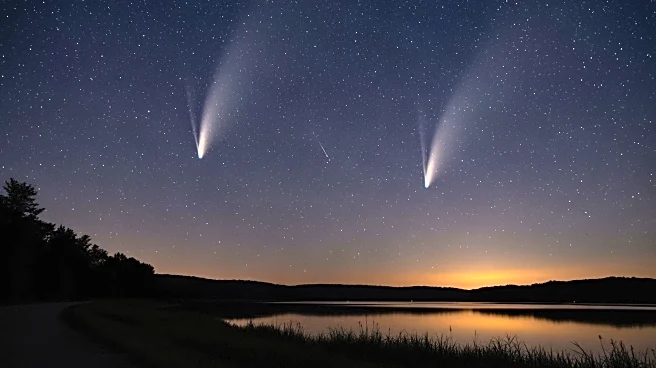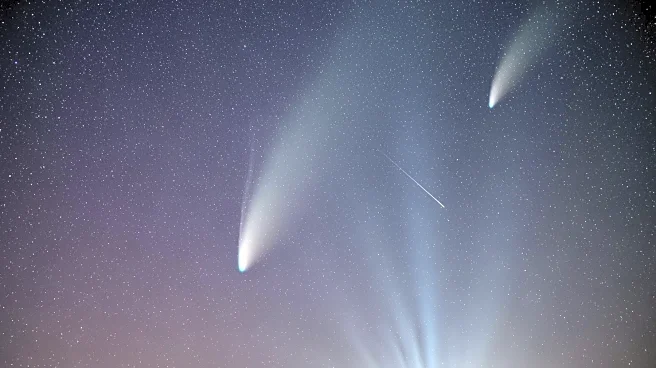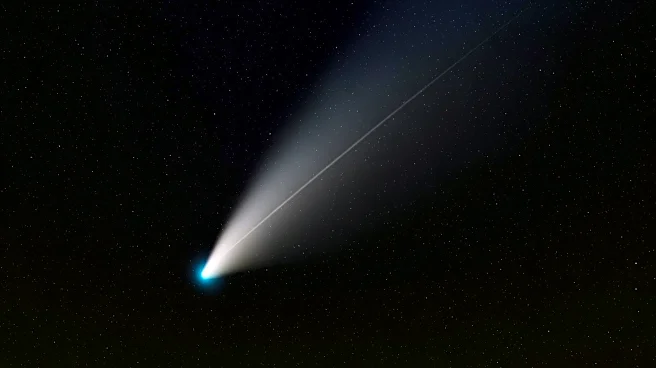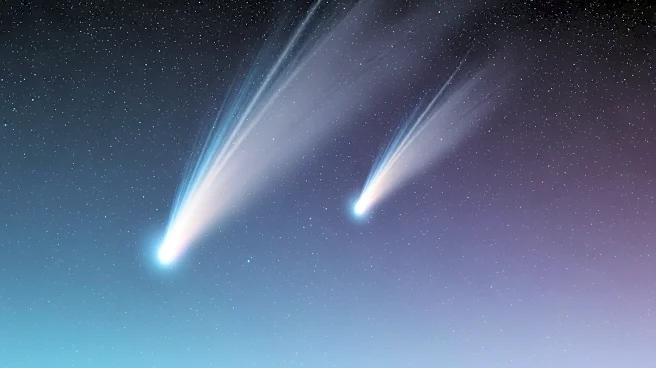What's Happening?
Two newly discovered comets, SWAN and Lemmon, are making a rare appearance in the night sky this week. Comet SWAN reached its closest point to Earth on October 20, while Comet Lemmon will do so on October 21.
SWAN, with a 22,000-year orbit, is visible primarily in the Southern Hemisphere, requiring binoculars for viewing due to its dimness. Lemmon, on the other hand, is brighter and visible to the naked eye in the Northern Hemisphere, including Michigan. Both comets offer a unique viewing opportunity, with Lemmon being particularly accessible in dark sky parks across Michigan.
Why It's Important?
The appearance of these comets provides a rare chance for astronomers and the public to observe celestial bodies that are not frequently visible. Comet Lemmon's brightness makes it an accessible event for amateur astronomers and sky watchers, promoting interest in astronomy and science education. The event underscores the importance of dark sky preservation, as light pollution can hinder the visibility of such phenomena. It also highlights the ongoing discovery and study of comets, contributing to our understanding of the solar system's dynamics.
What's Next?
As Comet Lemmon continues to brighten, it will remain visible in the evening sky through November, offering extended viewing opportunities. Observers are encouraged to visit dark sky parks for optimal viewing conditions. The event may inspire further research into cometary behavior and characteristics, as well as public interest in upcoming celestial events. The visibility of these comets may also lead to increased advocacy for dark sky preservation and awareness of light pollution issues.
Beyond the Headlines
The double comet display serves as a reminder of the vastness and complexity of the universe, often sparking philosophical and existential reflections. It may also influence cultural expressions, such as art and literature, inspired by the beauty and rarity of such celestial events. The event highlights the interconnectedness of global scientific communities, as discoveries and observations are shared across borders.











